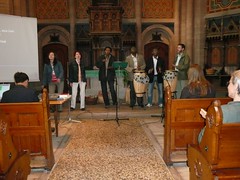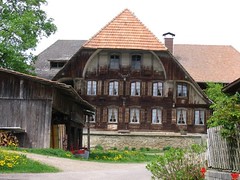 On Wednesday, May 20th, we had a seminar on alternative energy sources and sustainable city planning. We met our guide in a classroom under a solar tower in the city of Freiburg. We began with a powerpoint that had many facts about energy usage in Germany … Continue Reading ››
On Wednesday, May 20th, we had a seminar on alternative energy sources and sustainable city planning. We met our guide in a classroom under a solar tower in the city of Freiburg. We began with a powerpoint that had many facts about energy usage in Germany … Continue Reading ››
Seminar in Sustainable Urban Development
 On Wednesday, May 20th, we had a seminar on alternative energy sources and sustainable city planning. We met our guide in a classroom under a solar tower in the city of Freiburg. We began with a powerpoint that had many facts about energy usage in Germany … Continue Reading ››
On Wednesday, May 20th, we had a seminar on alternative energy sources and sustainable city planning. We met our guide in a classroom under a solar tower in the city of Freiburg. We began with a powerpoint that had many facts about energy usage in Germany … Continue Reading ››

